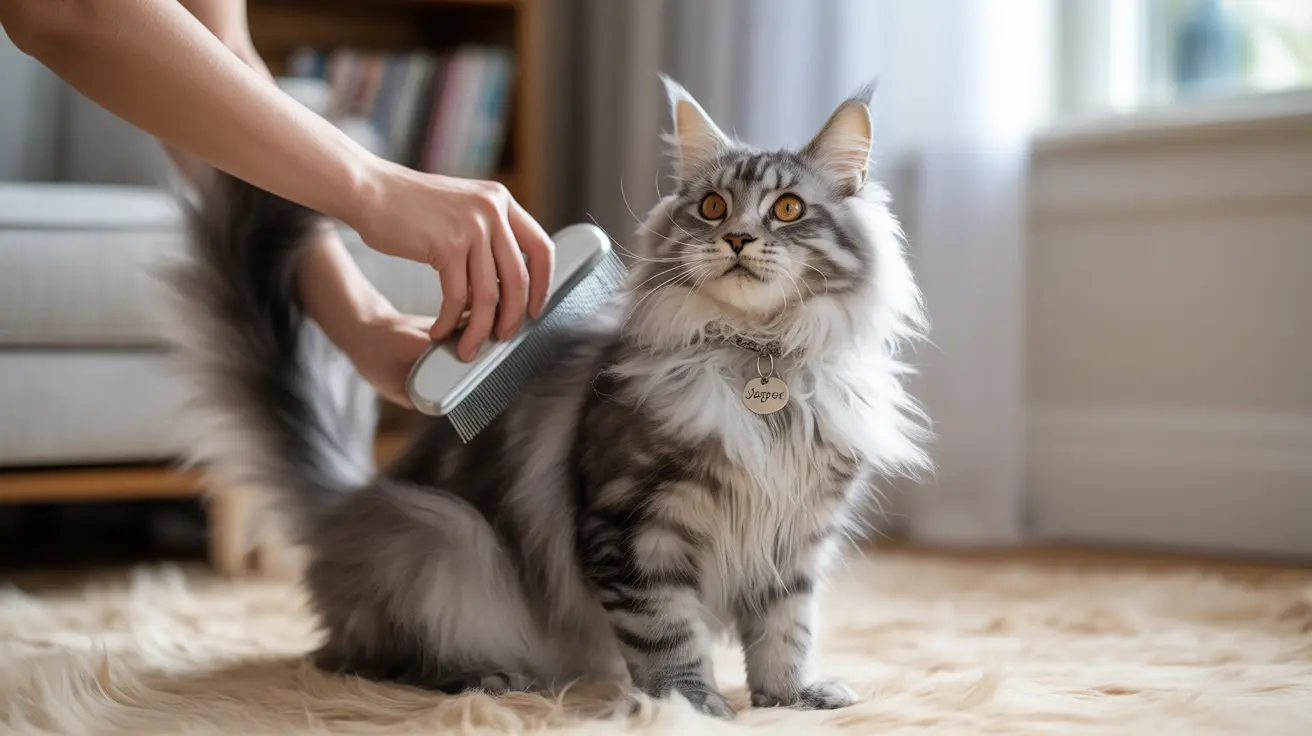If you're a cat owner, you've likely encountered the unpleasant sight of hairballs. While these are common occurrences in felines, knowing how to prevent hairballs in cats naturally can significantly reduce their frequency and improve your pet's comfort. This comprehensive guide explores effective, natural solutions to help manage and prevent hairball formation in your feline friend.
Understanding the root causes of hairballs is crucial for prevention. Cats spend up to 50% of their waking hours grooming, which inevitably leads to ingesting loose fur. While occasional hairballs are normal, excessive occurrences can signal underlying issues or indicate the need for preventive measures.
Understanding Cat Hairballs and Their Natural Prevention
Hairballs form when cats ingest loose fur during grooming, which can accumulate in their digestive tract. Long-haired breeds like Persians and Maine Coons are particularly susceptible, but any cat can develop hairballs. Natural prevention focuses on reducing fur ingestion and supporting healthy digestion.
Essential Grooming Practices for Hairball Prevention
Regular grooming is your first line of defense against hairballs. Daily brushing removes loose fur before your cat can swallow it during self-grooming. For long-haired cats, consider investing in professional grooming tools and establishing a consistent grooming routine.
Recommended Grooming Tools and Techniques
- Slicker brushes for removing loose undercoat
- Metal combs for detangling
- Deshedding tools for seasonal shedding
- Grooming mitts for cats who resist traditional brushes
Dietary Solutions for Natural Hairball Prevention
A proper diet plays a crucial role in preventing hairballs naturally. High-fiber foods help move hair through the digestive tract, while adequate hydration ensures smooth passage.
Beneficial Natural Food Additions
- Pumpkin puree (1-2 teaspoons daily)
- Coconut oil (¼ teaspoon per 10 pounds of body weight)
- Fish oil supplements
- Fresh grass or cat grass
- High-fiber vegetables (when appropriate)
Hydration Strategies for Hairball Prevention
Proper hydration is essential for preventing hairballs. Many cats don't drink enough water naturally, so implementing creative solutions can help increase their intake.
Effective Hydration Methods
- Multiple water stations throughout the home
- Pet water fountains
- Ice cubes in water bowls
- Wet food incorporation
- Broth-based treats
Environmental Enrichment and Stress Reduction
Stress and boredom can lead to excessive grooming, increasing hairball formation. Creating an enriching environment helps reduce this behavior.
Environmental Improvements
- Interactive toys
- Climbing structures
- Scratch posts
- Window perches
- Regular play sessions
Frequently Asked Questions
How can I naturally prevent hairballs in my cat through grooming and diet?
Regular brushing combined with a high-fiber diet and proper hydration forms the foundation of natural hairball prevention. Brush your cat daily and consider adding natural fiber sources like pumpkin to their diet.
What are the best natural foods and supplements to reduce hairball formation in cats?
Pumpkin puree, coconut oil, fish oil, and specialized high-fiber cat foods are excellent natural options. Always introduce new supplements gradually and consult your veterinarian first.
How does increasing my cat's water intake help with hairball prevention naturally?
Adequate hydration helps move hair through the digestive tract more efficiently, preventing buildup that leads to hairballs. Consider pet fountains and wet food to increase water intake.
What natural home remedies can I safely use to help my cat pass hairballs?
Safe natural remedies include small amounts of olive oil or pumpkin puree added to food, regular brushing, and increased water intake. Avoid giving petroleum products without veterinary guidance.
Can environmental enrichment and behavior changes reduce hairballs in cats?
Yes, reducing stress and providing environmental enrichment can decrease excessive grooming behaviors that lead to hairball formation. Ensure your cat has plenty of toys, climbing opportunities, and regular play sessions.
Conclusion
Preventing hairballs naturally requires a multi-faceted approach combining proper grooming, diet, hydration, and environmental enrichment. By implementing these natural strategies consistently, you can significantly reduce hairball occurrence and improve your cat's overall well-being. Remember to consult with your veterinarian before making significant changes to your cat's routine or if hairballs persist despite prevention efforts.






